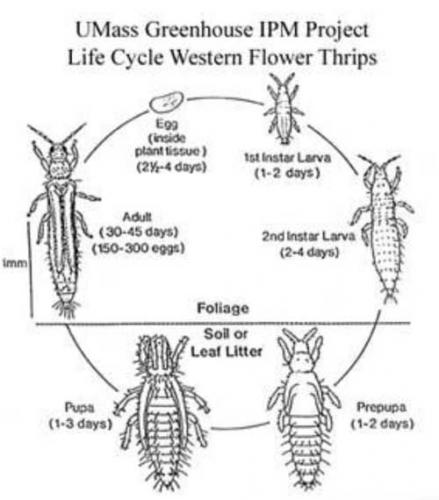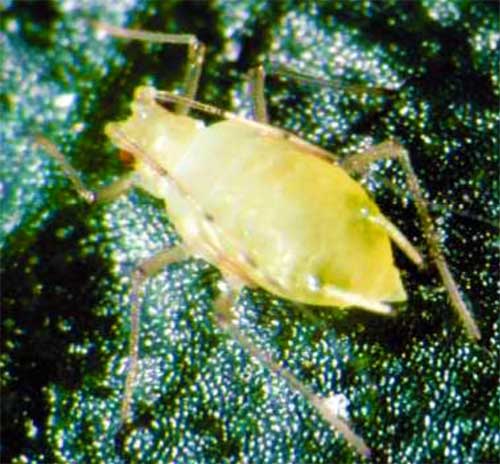Scout for thrips and aphids if plants are still in your greenhouse
Greenhouse growers starting plugs, bringing in rooted cuttings or rooting their own cuttings should check for thrips and aphids as winter begins. If detected, suggested insecticide treatments may be needed now to avoid problems in spring.
Some growers have already noticed an early infestation of thrips (Photo 1) or aphids (Photo 2) on plants they intend to use this season as stock plants, newly arrived cuttings or plugs. Check all incoming cuttings both rooted and un-rooted, plants stored under the benches, overwintering perennials and any new plugs. If this is the case in your greenhouse, step-up the scouting program, treat the infested hot spots and get them under control now.


Photos 1-2 . (Left) Thrips lifecycle. (Right) Foxglove aphid.
Photo credits: University of Mass. (left) and Ontario Ministry of Ag. (right).
Michigan State University Extension advises that growers place yellow sticky cards in their plugs and cuttings to detect thrips activity. They can also tell you about shorefly and fungus gnat levels. If you detect increasing numbers of thrips or aphids at this time, MSU entomologist Dave Smitley recommends you consider the following treatment choices and reapply once per week until populations are eliminated or under your predetermined threshold.
- Thrips: Aria, AzaGuard, Aza-Direct, AzatinXL, Mesurol, Orthene 97, Overture, Pedestal, Pylon, Sanmite
- Aphids: Aria, Azatin, Aza-Direct, Benefit, BotaniGard, Distance, Endeavor, Enstar II, Flagship, Kontos, Marathon, Ornazin, Orthene 97, Precision, Safari and Tristar
The take-home message is to keep greenhouses as clean as possible during early winter months to avoid an explosion of activity in March and April when conditions like longer days and warmer temperatures are right for the insects to reproduce more rapidly. Some timely, good scouting and spot-spraying at this time will save many headaches later on. An ounce of prevention now is better than many pounds of cure later in the season.



 Print
Print Email
Email


